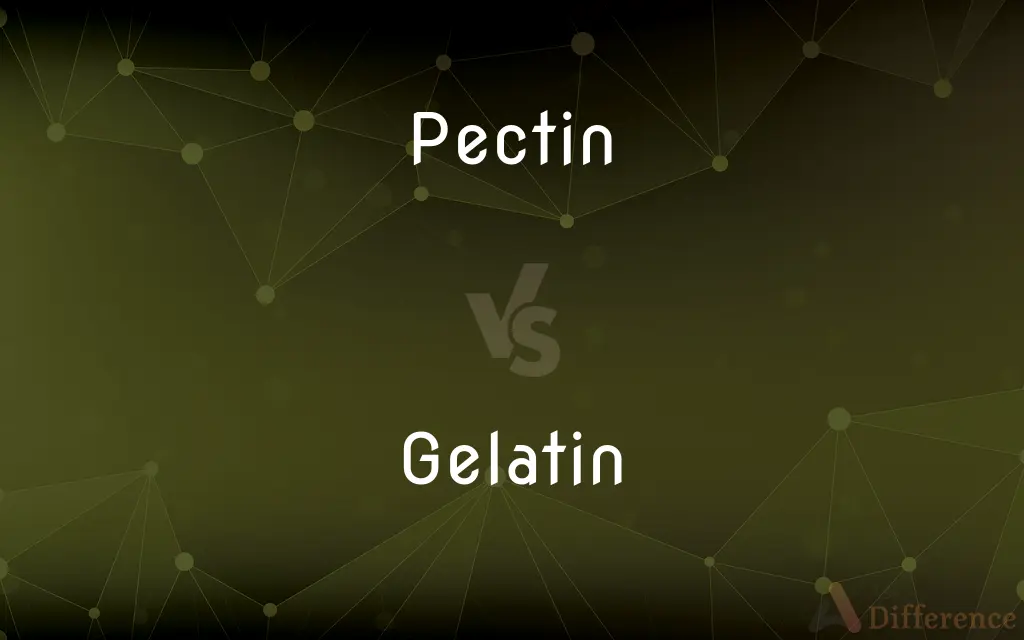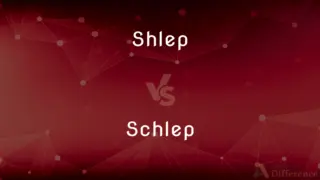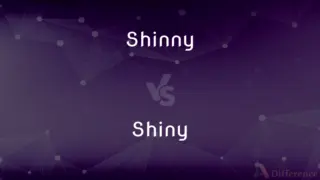Pectin vs. Gelatin — What's the Difference?
By Tayyaba Rehman — Updated on September 26, 2023
Pectin is a plant-based substance used to thicken and gel foods, while Gelatin is a protein derived from animal collagen, used for similar purposes. Both are used in food processing but have different sources and dietary restrictions.

Difference Between Pectin and Gelatin
Table of Contents
ADVERTISEMENT
Key Differences
Pectin and Gelatin are substances commonly used to thicken or gel foods. Pectin is derived from plants and is a carbohydrate, making it a suitable option for vegetarians and vegans. Gelatin, on the other hand, is a protein derived from animal collagen, typically from bovine or porcine sources, and is not suitable for those following vegetarian or vegan diets.
Pectin is often used in the making of jams, jellies, and gummies due to its gelling properties and its ability to form a gel in the presence of sugar and acid. Gelatin, conversely, is widely used in the production of gelatin desserts, marshmallows, and gummy candies due to its ability to gel liquids and create a smooth, melt-in-the-mouth texture.
Pectin, being plant-based, is high in fiber and is considered a polysaccharide. This makes it a beneficial addition to a diet as it supports digestive health. Gelatin, being animal-derived, offers a source of protein and amino acids, which can support skin, hair, nail health, and joint health.
The solubility of Pectin and Gelatin also differs; Pectin is soluble in water, and its gelling ability is activated by the presence of sugar and acid. Gelatin dissolves in hot water and gels as it cools, making it versatile in culinary applications where a firm texture is desired.
In essence, while Pectin and Gelatin serve similar culinary purposes as gelling agents, their differences in origin, dietary suitability, nutritional content, and solubility make them distinct in their applications and benefits.
ADVERTISEMENT
Comparison Chart
Source
Plant-based
Animal-based
Dietary Suitability
Suitable for vegetarians and vegans
Not suitable for vegetarians and vegans
Nutritional Content
High in fiber, carbohydrate
High in protein, provides amino acids
Solubility and Activation
Soluble in water, requires sugar and acid for gelling
Soluble in hot water, gels as it cools
Common Uses
Jams, jellies, gummies
Gelatin desserts, marshmallows, gummy candies
Compare with Definitions
Pectin
Pectin is soluble in water and requires sugar and acid to form a gel.
The chef added lemon juice to activate the pectin and thicken the sauce.
Gelatin
Gelatin provides amino acids and can support joint, skin, hair, and nail health.
Consuming gelatin can be beneficial for maintaining healthy skin and joints.
Pectin
Pectin is a suitable gelling agent for vegans and vegetarians.
Many vegan recipes call for pectin as an alternative to gelatin.
Gelatin
Gelatin is not suitable for vegetarians or vegans.
Vegetarians often avoid foods containing gelatin due to its animal origin.
Pectin
Pectin is commonly used in making jams and jellies.
Strawberries, sugar, and pectin are the main ingredients in strawberry jam.
Gelatin
Gelatin is a protein derived from animal collagen used as a gelling agent.
The dessert’s smooth texture was achieved using gelatin.
Pectin
Pectin is high in fiber and supports digestive health.
Consuming pectin is beneficial for maintaining a healthy digestive system.
Gelatin
Gelatin is commonly used in making desserts, marshmallows, and candies.
Gelatin is a key ingredient in making marshmallows fluffy and light.
Pectin
Pectin is a plant-derived carbohydrate used as a gelling agent.
The jam was made with pectin to achieve the perfect consistency.
Gelatin
Gelatin or gelatine (from Latin: gelatus meaning "stiff" or "frozen") is a translucent, colorless, flavorless food ingredient, commonly derived from collagen taken from animal body parts. It is brittle when dry and gummy when moist.
Pectin
Pectin (from Ancient Greek: πηκτικός pēktikós, "congealed, curdled") is a structural acidic heteropolysaccharide contained in the primary and middle lamella and cell walls of terrestrial plants. Its main component is galacturonic acid, a sugar acid derived from galactose.
Gelatin
A colorless or slightly yellow, transparent, brittle protein formed by boiling the specially prepared skin, bones, and connective tissue of animals and used in foods, drugs, and photographic film.
Pectin
Any of a group of water-soluble colloidal carbohydrates of high molecular weight found in ripe fruits, such as apples, plums, and grapefruit, and used to jell various foods, drugs, and cosmetics.
Gelatin
Any of various similar substances.
Pectin
(carbohydrate) A polysaccharide extracted from the cell walls of plants, especially of fruits; under acidic conditions it forms a gel. It is often used in processed foods, especially jellies and jams where it causes thickening (setting).
Apple is rich in pectin and so is often added to other fruits when making jam so it will set.
Gelatin
A jelly made with gelatin, used as a dessert or salad base.
Pectin
One of a series of carbohydrates, commonly called vegetable jelly, found very widely distributed in the vegetable kingdom, especially in ripe fleshy fruits, as apples, cranberries, etc. It is extracted as variously colored, translucent substances, which are soluble in hot water but become viscous on cooling. It is commonly used in making fruit jelllies.
Gelatin
A thin sheet made of colored gelatin used in theatrical lighting. Also called gel.
Pectin
Any of various water-soluble colloidal carbohydrates that occur in ripe fruit and vegetables; used in making fruit jellies and jams
Gelatin
A protein derived through partial hydrolysis of the collagen extracted from animal skin, bones, cartilage, ligaments, etc.
Gelatin
An edible jelly made from this material.
Gelatin
A thin, translucent membrane used as a filter for photography or for theatrical lighting effects.
Gelatin
Animal jelly; glutinous material obtained from animal tissues by prolonged boiling. Specifically (Physiol. Chem.), a nitrogeneous colloid, not existing as such in the animal body, but formed by the hydrating action of boiling water on the collagen of various kinds of connective tissue (as tendons, bones, ligaments, etc.). Its distinguishing character is that of dissolving in hot water, and forming a jelly on cooling. It is an important ingredient of calf's-foot jelly, isinglass, glue, etc. It is used as food, but its nutritious qualities are of a low order.
Gelatin
A colorless water-soluble glutinous protein obtained from animal tissues such as bone and skin
Gelatin
An edible jelly (sweet or pungent) made with gelatin and used as a dessert or salad base or a coating for foods
Gelatin
A thin translucent membrane used over stage lights for color effects
Gelatin
Gelatin dissolves in hot water and gels as it cools.
The chef dissolved the gelatin in hot water before allowing it to cool and set.
Common Curiosities
Is Gelatin plant-based?
No, Gelatin is derived from animal collagen and is not plant-based.
What is Pectin?
Pectin is a carbohydrate gelling agent derived from plants, commonly used in making jams, jellies, and gummies.
How does Pectin form a gel?
Pectin forms a gel in the presence of sugar and acid and is soluble in water.
How is Gelatin used in cooking?
Gelatin is dissolved in hot water and gels as it cools, making it useful in creating firm textures in foods like desserts and candies.
Does Gelatin have nutritional benefits?
Yes, Gelatin is high in protein and provides amino acids which can support skin, hair, nail, and joint health.
Is Pectin suitable for individuals with dietary restrictions?
Yes, Pectin is suitable for individuals with dietary restrictions such as vegetarians and vegans.
Can individuals with dietary restrictions consume Gelatin?
No, individuals who are vegetarians, vegans, or have certain religious restrictions may avoid Gelatin.
Where is Gelatin derived from?
Gelatin is derived from the collagen found in animal bones, skin, and connective tissues, typically from bovine or porcine sources.
Can Gelatin be used to make vegan dishes?
No, Gelatin is not suitable for vegan dishes due to its animal origin.
Can vegans consume products made with Pectin?
Yes, Pectin is vegan-friendly as it is plant-derived.
Is Pectin high in fiber?
Yes, Pectin is high in fiber and can support digestive health.
Can Pectin be used in a variety of dishes?
Yes, Pectin can be used in a variety of dishes like jams, jellies, and gummies, where a gelling effect is desired.
Where is Pectin derived from?
Pectin is derived from the cell walls of fruits, especially apples and citrus fruits.
Is Gelatin versatile in culinary applications?
Yes, Gelatin is versatile and can be used in various culinary applications like desserts, marshmallows, and gummy candies.
Share Your Discovery

Previous Comparison
Shlep vs. Schlep
Next Comparison
Shinny vs. ShinyAuthor Spotlight
Written by
Tayyaba RehmanTayyaba Rehman is a distinguished writer, currently serving as a primary contributor to askdifference.com. As a researcher in semantics and etymology, Tayyaba's passion for the complexity of languages and their distinctions has found a perfect home on the platform. Tayyaba delves into the intricacies of language, distinguishing between commonly confused words and phrases, thereby providing clarity for readers worldwide.
















































